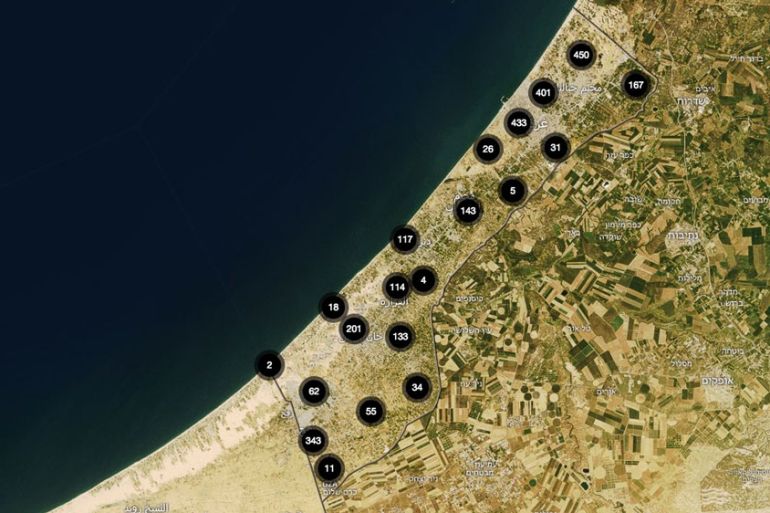Mapping Israel’s strikes on Gaza
An interactive map details the Israeli attacks on the Gaza Strip during the 50-day assault during July and August 2014.

Plotted pixel by pixel, a new interactive map presents viewers with the most comprehensive record of the 2014 Israeli war on Gaza to date.
The Gaza Platform, released by Amnesty International and the University of London-based research project Forensic Architecture, unfurls into a spread of data, photos, testimonies and video that work to map out the Israeli military’s strikes on the Palestinian territory during the conflict.
Keep reading
list of 4 itemsEid Mubarak: Hear greetings in different languages
When is Eid al-Fitr 2024 and how is it celebrated?
Israel’s war on Gaza – six relentless months of death and destruction
The goal is to thread together individual attacks into visible patterns that can better illustrate the destruction caused by Israel’s assault on the territory and potentially reveal the “systematic nature of Israeli violations committed during the conflict”, according to Philip Luther, director of Amnesty International’s Middle East and North Africa Programme.
The map will be updated as the project progresses, but so far it “clearly illustrates an overwhelming pattern” of Israeli attacks on residential homes, which caused at least 1,100 civilian deaths, as well as Israel’s repeated use of highly explosive artillery in areas with dense civilian populations, according to the report.
The map also tells of the prevalence of a “knock on the roof” strategy, in which the Israeli military fires a missile and then follows this so-called warning with a larger bomb. Amnesty International emphasised that such strikes do not “absolve Israel from the clear obligation not to direct attacks at civilians or civilian property”.
The Platform is the result of several months of work by researchers in both London and Gaza, who inputted on-the-ground evidence collected by Gaza-based human rights organisations, and matched the information with multimedia, imagery beamed from satellite technology and additional data from Amnesty International.
The platform gives a comprehensive, zoomed-out view of the conflict, and according to Eyal Weizman, director of Forensic Architecture, represents a “significant step in the process of documenting the full scale of violations that took place”. Individuals and other organisations are called on to send in their own evidence of attacks or violations that they have witnessed.
Approximately 2,200 Palestinians in total were killed by Israel’s assault last summer, the majority of whom were civilians and nearly a quarter of whom were children, according to the United Nations. Seventy-two Israelis, of which 66 were soldiers, and one Thai national were also killed.
In this interactive, you can explore and analyse over 2,500 individual attacks by Israel during the 2014 assault.